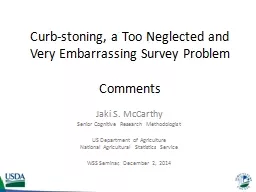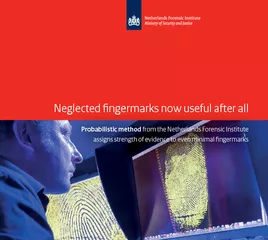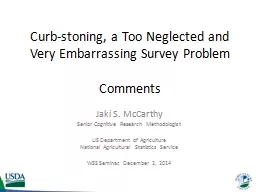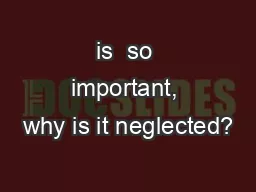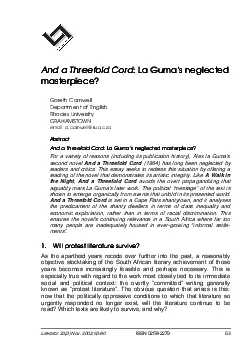PPT-Curb-stoning, a Too Neglected and Very Embarrassing Survey
Author : pasty-toler | Published Date : 2017-10-07
Comments Jaki S McCarthy Senior Cognitive Research Methodologist US Department of Agriculture National Agricultural Statistics Service WSS Seminar December 2 2014
Presentation Embed Code
Download Presentation
Download Presentation The PPT/PDF document "Curb-stoning, a Too Neglected and Very E..." is the property of its rightful owner. Permission is granted to download and print the materials on this website for personal, non-commercial use only, and to display it on your personal computer provided you do not modify the materials and that you retain all copyright notices contained in the materials. By downloading content from our website, you accept the terms of this agreement.
Curb-stoning, a Too Neglected and Very Embarrassing Survey: Transcript
Download Rules Of Document
"Curb-stoning, a Too Neglected and Very Embarrassing Survey"The content belongs to its owner. You may download and print it for personal use, without modification, and keep all copyright notices. By downloading, you agree to these terms.
Related Documents

